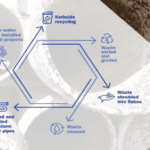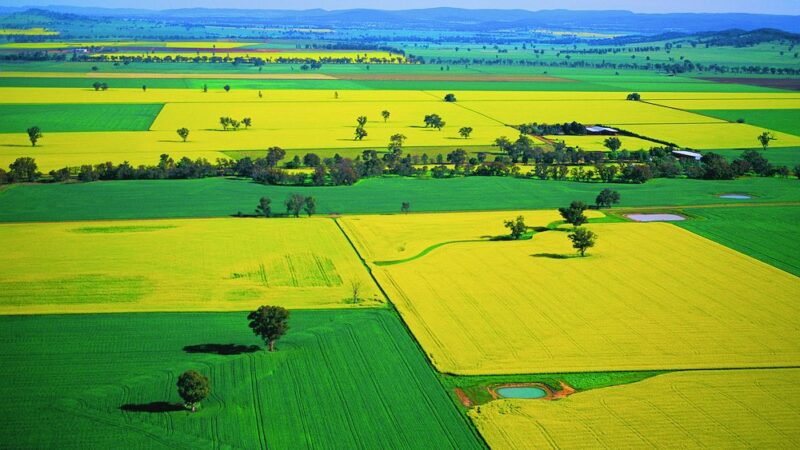The renewable energy hub project by Innovating Energy is possible due to grant assistance under…
Winding back the war on wind energy in Australia
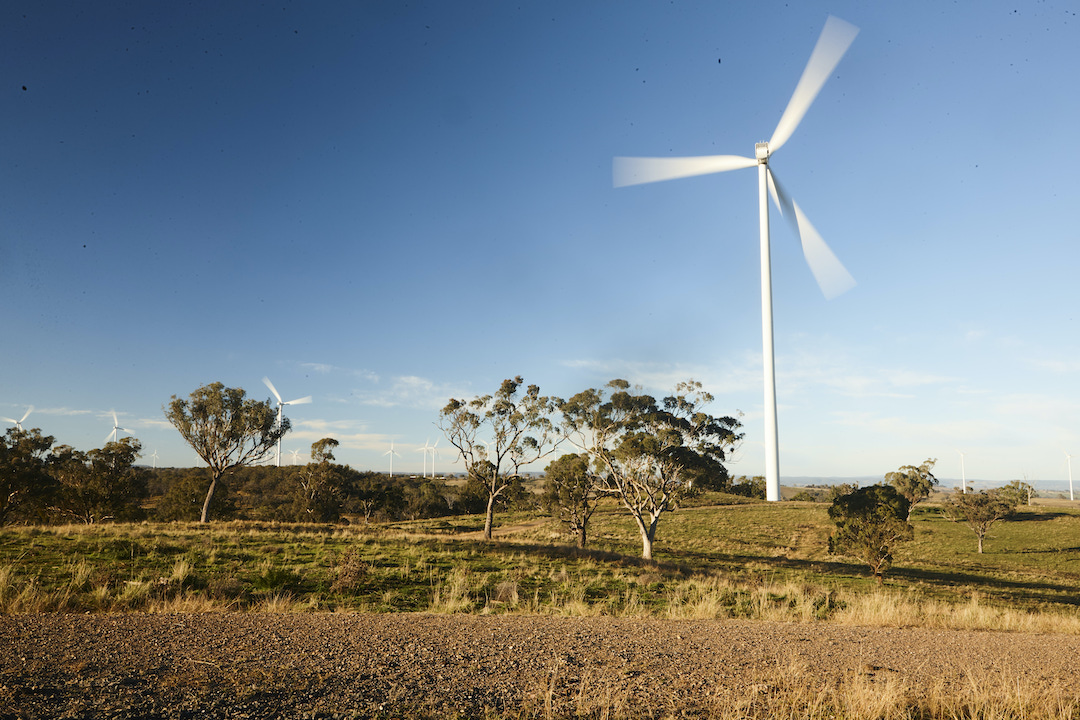
The first grid-connected development for wind energy in Australia was built near Crookwell, in the central west of New South Wales, in 1998. The first wind project of its kind had eight 45m turbines each producing 600 kilowatts of power.
It faced strong early opposition from local residents and the Upper Lachlan Shire Council, with concerns expressed about landscape, traffic and land value impacts, bird flight paths, radiation, television reception, loss of privacy and security, and poor consultation. But after a decade of operation attitudes towards the Crookwell Wind Farm had changed markedly – and 23 years later it is now promoted as a popular tourist attraction.
It’s a pattern that’s been repeated across NSW, and interstate, according to Australian Energy Infrastructure Commissioner Andrew Dyer.
Wind development complaints
Several reports on community attitudes to wind projects and renewable energy between 2010 and 2014 highlighted a gap between well-documented high levels of support (80 per cent or more) and the clouding of public discussion by vocal opponents.
Andrew says there was a long queue of people with concerns and complaints about wind developments waiting when he opened the office of the National Wind Farm Commissioner in November 2015. Most of those complaints were about operating wind projects, particularly noise, vibration and health issues.
As part of his remit, Andrew worked with programs commissioned by the Federal Government to independently review the science of wind developments, including two longitudinal research studies into wind projects and human health, looking at the effects of both audible and inaudible sound.
In its first four years of operation, his office received more than 360 complaints: 70 were related to 14 operating wind projects and 234 about 58 proposed wind projects. By December 2019, 97 per cent of all complaints received had been settled.
“Most wind farm complaints are resolved by providing factual, correct information to the complainant, either directly by our office, the project proponent or the state government. Accurate information usually clears things up,” Andrew says.
“Most complaints we receive these days are about proposed projects, so it’s often driven by a fear of the unknown. And many relate to being fair to all parties.”
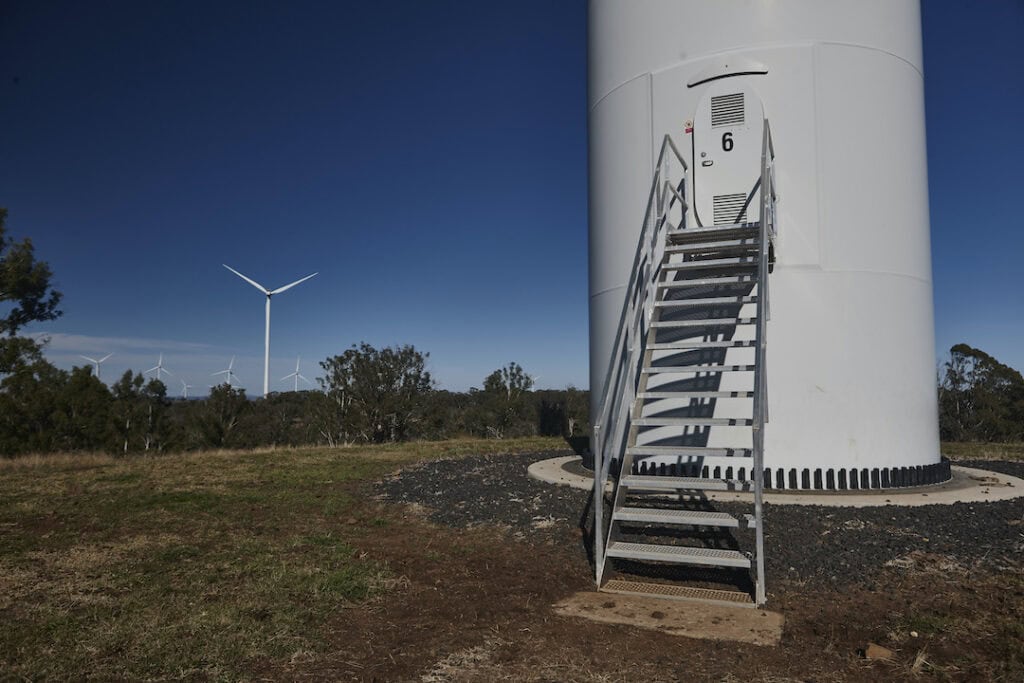
Among the aggrieved are farmers who had agreed to host turbines and expected to receive regular payments from the project, but missed out when projects were reconfigured to have fewer, higher capacity turbines.
“They got nothing at all,” Andrew says. “And they went from being ‘best friends’ of the project to very unhappy neighbours. One of the things we champion with industry is to treat neighbours with respect and make them part of the ‘winning team’. Many neighbours these days are party to what’s called a neighbour agreement, where they receive some level of compensation or payments for the fact that their view’s going to change, they’re going through two years of noise, dust and disruption during construction, and recognition they’re not going to get the host income stream they had once expected.”
Wind energy in Australia is a long-term game
Another positive change has been the shift away from cavalier front-end developers pressuring farmers to sign up as hosts, then selling the project to another company to build it.
“Developers are now taking a much longer-term view of the need for effective community engagement, and more appropriately investing time, effort and focus on proactively explaining things properly,” Andrew says.
“You can imagine a lot of misinformation flies around the community if you don’t have someone on the ground to convey the facts and resolve concerns; unchecked, it can get quite out of hand.”
Genuine community engagement has been a hallmark of CWP Renewables projects across NSW since 2007.
Head of Development Ed Mounsey says the company’s approach has been to seek public feedback on its proposals at an early stage. This allows them to use it to reshape projects where possible.
Ed says attitudes towards wind farms have changed significantly since the early “wind rush” days of 10 years ago, when they were still something of a novelty.
“As we’ve continued to develop more projects, sometimes in areas where there are existing projects, we’ve certainly seen the benefit of context,” he says. “The context of ‘okay, I now know what it is, I can touch it, I can see it, I can hear it. I know what the construction and operational impacts are like. As a potential host, I can see what the roads, revegetation and weed management look like’. They’re all really good examples to present and allay any fears that a host or a neighbour or a general community may have had.”
Ed Mounsey, Head of Development, CWP Renewables
Sapphire Wind Farm
CWP Renewables owns Sapphire Wind Farm, between Glen Innes and Inverell, and manages Boco Rock Wind Farm, near Cooma. It has two more wind projects under construction – Crudine Ridge near Mudgee, and Bango near Yass – and a further 3.5 gigawatts of wind developments, solar farms, and battery and hybrid projects in the planning stages across NSW.
The $588 million Sapphire Wind Farm is the largest in the state, producing 270 megawatts (MW) of energy – enough to power 115,000 homes – from 75 turbines since 2018. Approval has been granted to develop a 200MW solar farm and 32MW battery facility nearby.
Ben Swan describes his operation as a typical New England mixed farm. Ben produces fine wool sheep, crossbred lambs, Hereford and Angus cattle, as well as both summer and winter crops. One of his properties also hosts five 3.6MW turbines that are part of the Sapphire Wind Farm.
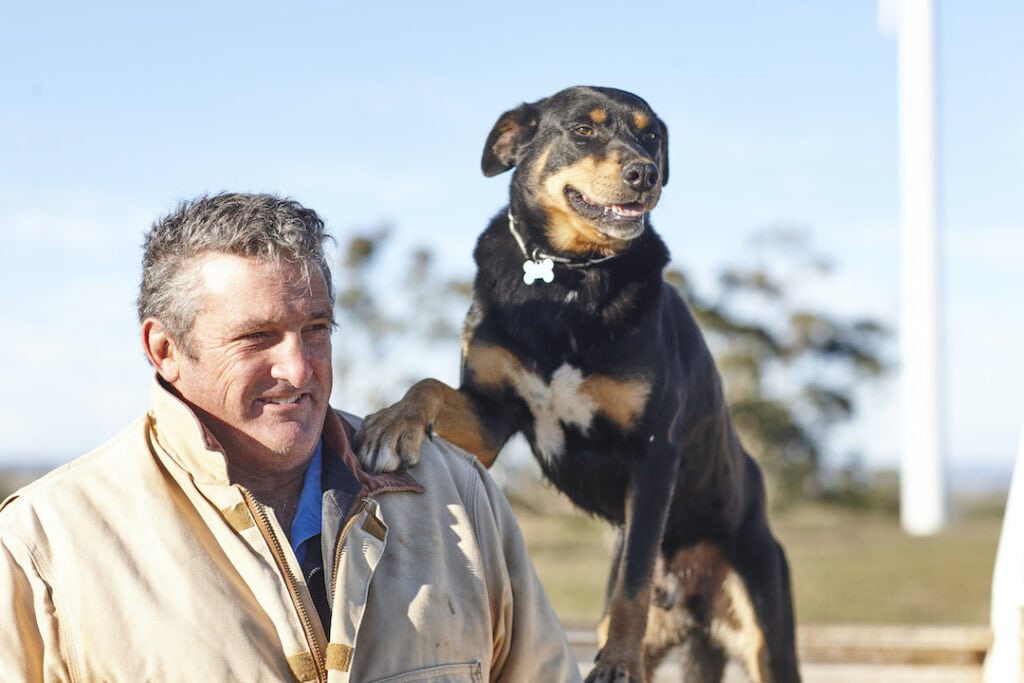
As is often the case, the finished project looks a lot different to the initial proposal announced in 2009. Approved in 2013, finance was secured in 2016, and construction completed in 2017.
“Initially we were going to be in the middle of the project, and it was a lot bigger,” Ben says. “The project had a much bigger footprint right back at the start. At its peak I think there were 23 or 24 affected landholders and 159 towers from 0.5 to 1.5MW. Years later it ended up as 75 larger 3.6MW towers and nine landholders, so the same amount of power out the end of the plug, but with a far smaller footprint.”
The 200-metre towers on Ben’s land were constructed during the first stage, giving him a front row seat, and he says he “couldn’t be happier with how it happened,” even with the disruption.
“On some days there could be 200 or 300 vehicle movements and men everywhere and trucks,” he recalls. “It’s a big process. But they were true to their word. They made roads on the farm that are better than most shire roads and good gates and good causeways. There were mess ups, but nothing massive, nothing we couldn’t overcome.”
Ben considers the quarterly payments for hosting the turbines a bonus, saying they were a big help when he was hand-feeding stock during the drought.
The cattle remain unperturbed, snoozing in the shade cast by the towers, and the tenants living in Ben’s houses have reported no adverse effects. He often takes visitors to the towers and gets a kick out of their reaction.
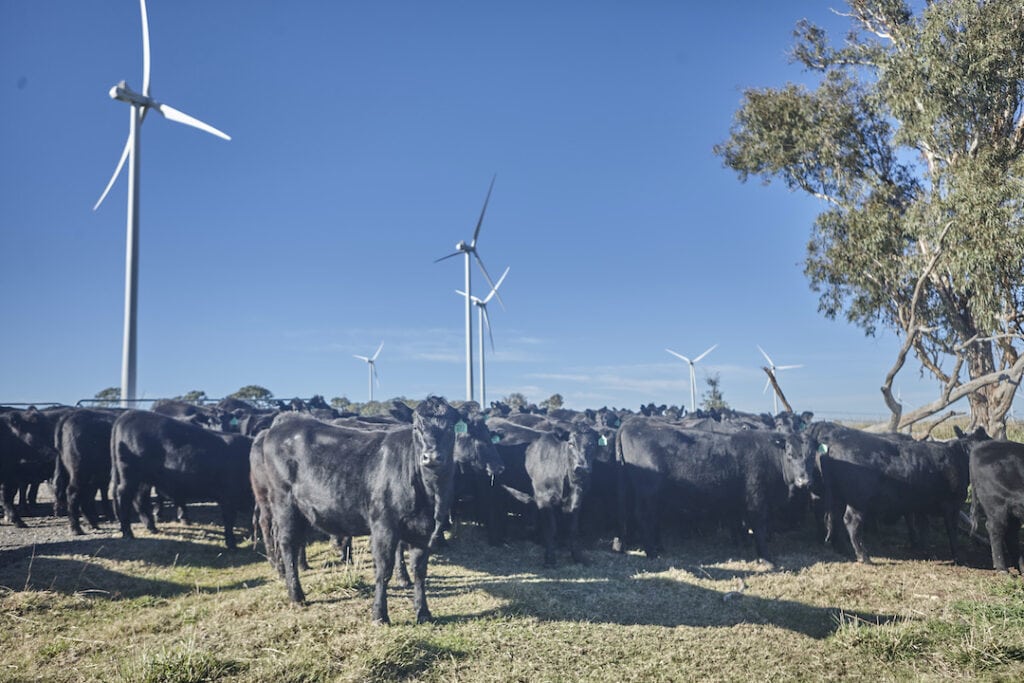
“No one can understand the scale until they actually get to them,” he says. “And then when they stand under it they’re surprised by how quiet they are. On a windy day when the thing’s going full speed, there’s an occasional whoosh, and a clang and a clunk as the blades change direction. But you don’t have to go far and you can’t hear them at all.”
Ben frequently receives phone calls from people worried about wind farm proposals in other areas.
“There’s a whole heap of negativity and most of it’s just from lack of education,” he says. “We’re proud of the fact we’re part of renewable energy, and we’re contributing to that. We’re also proud that we were one of the first wind farms to have a Community Fund.”
Ben is on the committee that distributes about $180,000 donated by Sapphire Wind Farm each year to community and sporting organisations. Grants have funded a range of activities, from resurfacing tennis courts and building upgrades to the purchase of sports equipment and marquees.
Sapphire Wind Farm notched up another Australian first in 2018 with its community investment initiative, allowing Inverell and Glen Innes Severn shire residents to directly invest in the project.
Glen Innes Severn Mayor Carol Sparks says it took about four years for the locals to “get on board” with wind farms. Visits from Andrew helped.
“Once people understood they could actually graze their sheep and cattle around the area with no problems, they were reassured,” she says. “The proponents are definitely getting better at addressing some of people’s concerns.”
Seeing is believing
There is another wind project near Glen Innes, White Rock, which has 70 turbines. A further two 25-turbine wind developments are proposed for sites 10km west of Glen Innes and 40km to the south.
They’re all in the New England Renewable Energy Zone, the biggest of five zones identified in the NSW Government’s Electricity Strategy and Electricity Infrastructure Roadmap released last year.
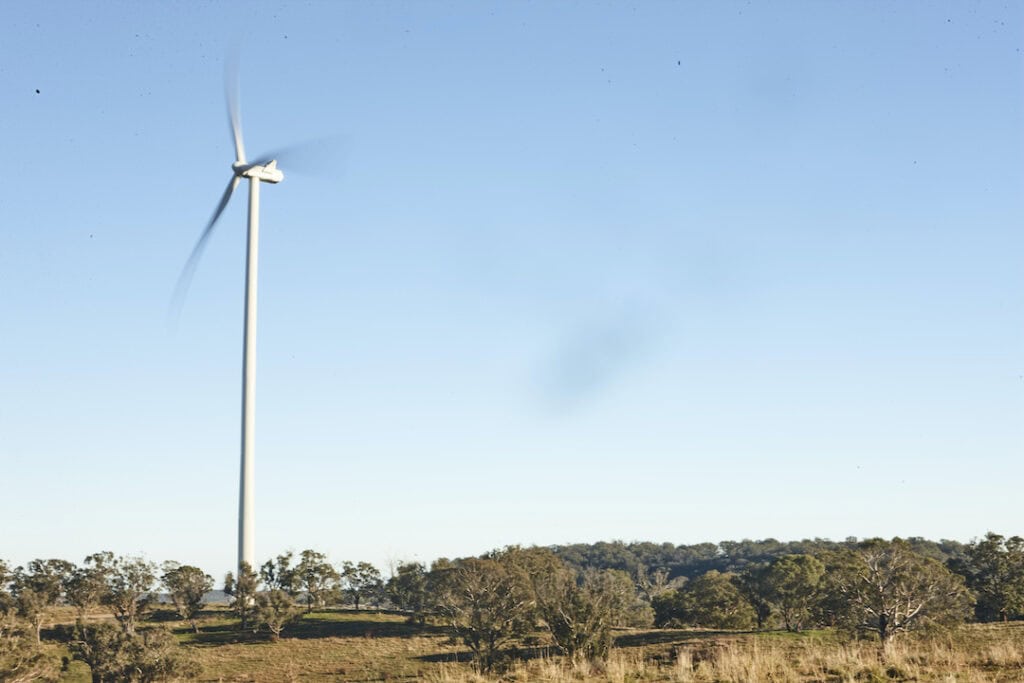
The roadmap is intended to unlock $32 billion of private sector investment in large-scale electricity generation, storage and transmission by 2030, to replace the four coal-fired power stations scheduled to close within the next 15 years.
A Department of Planning, Industry and Environment spokesperson says there were 14 wind projects with 614 turbines operating across NSW in January, five (168 turbines) under construction, and 10 (848 turbines) in the planning stages.
As Australian Energy Infrastructure Commissioner, Andrew is now responsible for receiving complaints about large-scale solar farms, battery storage and major transmission projects as well as wind energy in Australia.
Andrew advises landowners thinking about hosting a large-scale project to visit other sites under construction to experience first-hand the extent of the works and impacts on the land. He also recommends they read his annual report, which contains sections dedicated to project hosts and neighbours, and the comprehensive Renewable Energy Landholder Guide, produced by NSW Farmers.
Enquiries and complaints about energy projects can be made to the Commissioner’s office by calling 1800 656 395, or by visiting: nwfc.gov.au
The future of renewables in Australia is looking up, evident in this special report.


